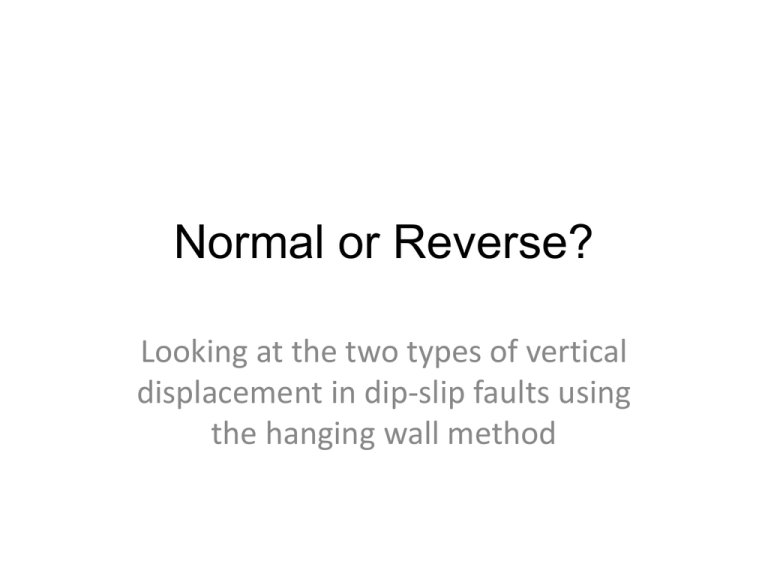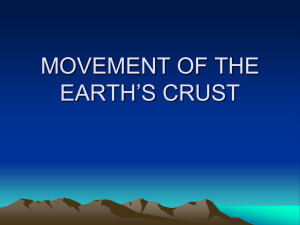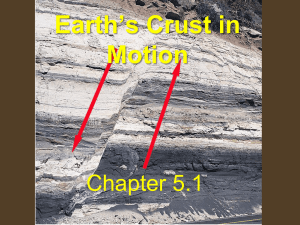Normal or Reverse? - Sub
advertisement

Normal or Reverse? Looking at the two types of vertical displacement in dip-slip faults using the hanging wall method Terminology An easy method to decide what sort of dip-slip fault we have uses the old mining terms of: Hanging wall and Footwall The hanging wall is always on top of the fault Hanging wall Footwall The footwall is always underneath the fault These names do not need us to know which side has moved up or down or if a tension or compression has occurred 1 km We apply this to the fault we looked at in the introduction to faults. Hanging wall Hanging Wall Footwall The block above the fault plane is the hanging wall, and the block below the fault is the footwall. Footwall Draw arrows to show the relative movement on either side of the fault. Hanging wall Footwall Hanging wall Is the footwall the upthrow side or downthrow side of the fault? Upthrow The arrow points up, it must be the upthrow side. Footwall Upthrow Normal Footwall This makes FU N ! This is a normal fault. Hanging wall Normal faults are caused by a pulling apart motion (tension). Upthrow Footwall Another example 1 km Hanging wall Two interpreted horizons. Two faults. Look at the fault in the NW. The block above the fault plane is the hanging wall, and the block below the fault is the footwall. Footwall 1 km Hanging wall Footwall Draw arrows to show the relative movement on either side of the fault. 1 km Hanging wall Is the footwall the upthrow side or downthrow side of the fault? The arrow points down, it must be the downthrow side. Footwall Downthrow Footwall This does not make FUN! This is a reverse fault. 1 km Hanging wall Footwall Reverse faults are caused by a pushing together motion (compression). 1 km Try the other fault. Hanging wall Footwall The block above the fault plane is the hanging wall, and the block below the fault is the footwall. 1 km Draw arrows to show the relative movement on either side of the fault. Hanging wall Footwall 1 km Is the footwall the upthrow side or downthrow side of the fault? Hanging wall Footwall The arrow points down, it must be the downthrow side. Footwall Downthrow This does not make FUN! This is a reverse fault. 1 km Reverse faults are caused by a pushing together motion (compression). Hanging wall Footwall 1 km There are many more faults on this seismic profile. Click to see a few suggestions. Do you agree?








